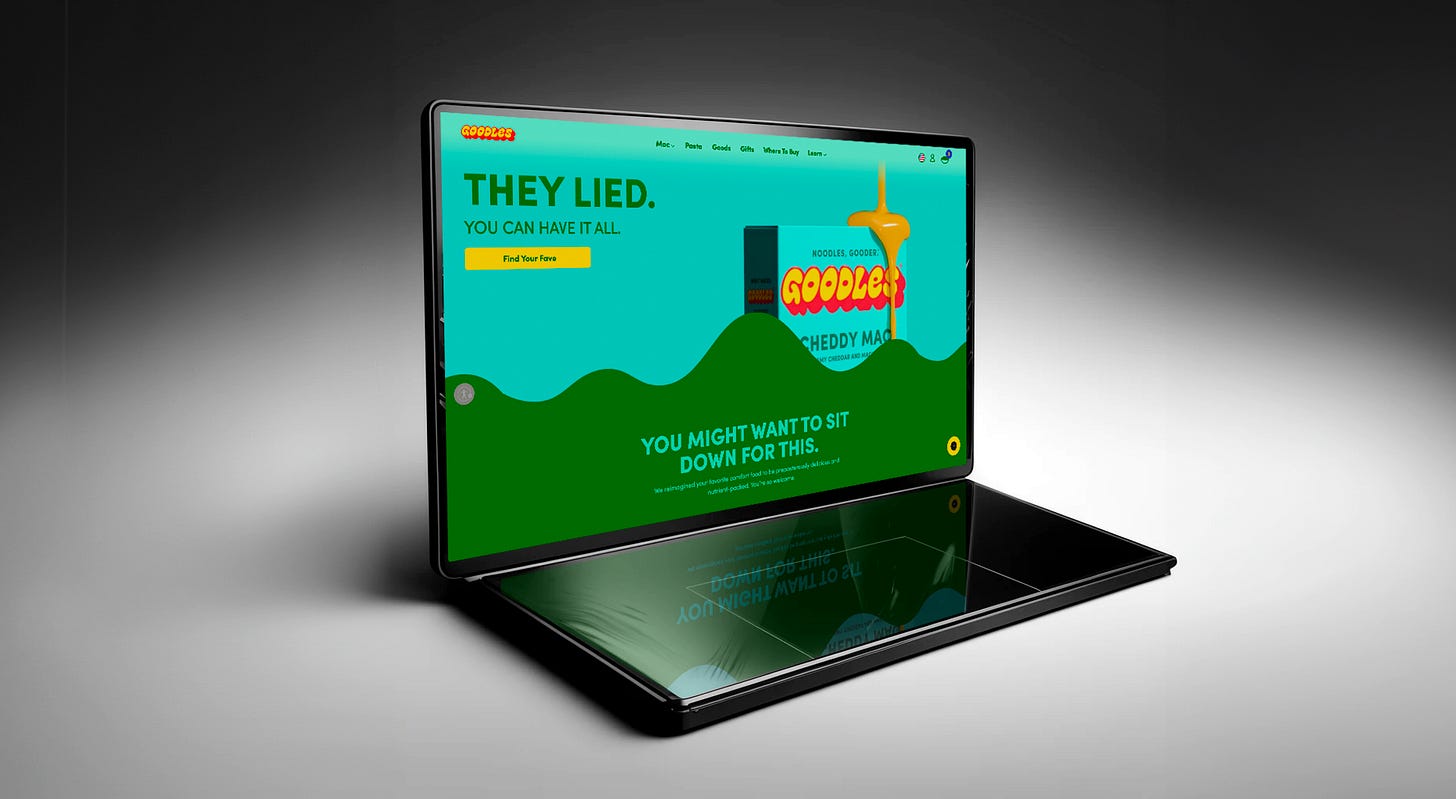How Not To Spend Thousands Of Dollars Tanking Your Conversion Rate.
Hint: Build. Test. Learn.
Katie sighs, and tells me
“We spent 6 months redesigning our store, and after we launched, our metrics plummeted”
I’m not surprised..
I hear this more and more from DTC brands.
It’s the same reason Lululemon brought me in to work with their International Ecom team. They’d replatformed, redesigned, and relaunched, only to see their conversion rate drop to under 1%. A year later our team had the most successful quarter to date.
Katie is yet another ambitious founder who’s made a huge investment only to discover that didn’t pay off.
I know exactly why it happened.
First of all, it’s not the product.
I speak to a lot of early-stage startups through my podcast, and the ones that succeed often spend months and years refining version one of their product before it sells to the public.
Jen, CEO and co-founder of Goodles, once told me:
“We did over 1000 versions to get the mac and cheese you’re tasting.” Only after they said it was off the charts did we say...alright...I think we’re ready to launch.”
One thousand versions!
Wild, huh?
For these founders, experimentation is at the heart of everything they do.
They test version after version. Killing off the worst. Farming for feedback. Building upon the best.
They thrive off this community-first data. They know that to grow - to be the best - you must first measure what matters. At every iteration, they establish their baseline before finding ways to improve it. The data gathered from testing informs the next iteration until they’re satisfied they’ve done enough.
Build. Test. Learn.
That’s why her customers leave her amazing reviews like:
“This mac and cheese is so yummy that my picky kiddo approves it!”
Catherine P
and
“Very tasty dndndndncncnfndndndmxmdmdndndndndndnfnabanakkzkxmxnxndndnndn sizjsmsmsjsksmsmsmskdkmdmdmdmddmmdmdmdmdkdkdkdkkdkdkdkdkdkskkdkdkdls”
Joseph S
(Yes. That is a real review. Pinky promise.).
So, it’s not the product. It’s not the marketing either.
These brands love to pump money into social media. Once again, driven by an experimentation-first mindset. New creative comes out daily, on different platforms, with different influencers, and different promotions.
Constant optimization of the machine.
Always gathering data and learning from customers.
Build. Test. Learn.
When Katie relaunched her online store, she was so excited. Her co-founder was stoked. The growth team were buzzing. The design agency said it was their best work yet.
…Except…
They forget her most important stakeholder.
The customer.
Forgot their most important process too.
They gathered zero data on what customers loved about their existing site.
They didn’t take what worked and redesigned the rest.
They simply discarded everything they had and started from scratch.
Instead of Build Test Learn, they chose Build Build Build.
No testing.
No learning.
I’m all for building, but you need to focus on the right thing.
The truth is that, in their customer’s eyes, plenty of things worked well on their old site. Plenty they disliked too, perhaps. But when you change everything at once, you throw out the good with the bad.
Doing so can alienate old customers without pleasing new ones.
New doesn’t always mean better.
It was a complex plan based on hundreds of little assumptions which burned all their resources in one go.
They forgot about experimentation.
What Katie could have done was spend all the same money, and all the same time, designing with purpose.
Testing smaller changes.
Identify which version their customers loved most.
Repeating the process over and over.
Continuously improving their customer experience.
Build. Test. Learn.
Sustainably, and profitably growing their business.
There’s an old Chinese proverb that goes something along the lines of
“The best time to start experimenting was 20 years ago. The second best time is now”
And so, that’s what Katie and I are going to do together.
Starting now.


Ian, this is great and makes a ton of sense! One question though, what if the brand's e-commerce platform is incredibly outdated and, for functionality and optimization reasons, they really need to be upgrading their tools...which entails a rebuild? Can a rebuild be just as successful as long as you're doing it with insights about what works well for customers on the existing site? Cheers!
I'm glad to see this published! I look forward to more.